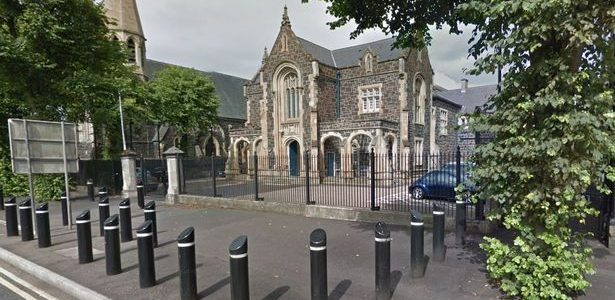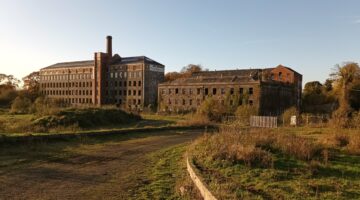On 8th February 2016, Justice Minister David Ford announced his decision to rationalise the court estate and close a further five courthouses, including three important listed buildings. This followed on from a consultation by the Northern Ireland Courts and Tribunals Service.
This announcement confirms the closure of three examples of important civic architecture in Northern Ireland, at Armagh, Ballymena and Magherafelt. The Minister announced “the reality is that Northern Ireland does not need the number of courthouses we currently have and we can no longer afford to retain them and to operate them.” While UAHS accepts that there may no longer be justification for a courthouse in every county town, whose locations originally facilitated an age when travel was on horseback or on foot, we must also acknowledge the potential impact of the closure of these buildings on the towns and communities they served.
The listed Armagh Courthouse, built in 1809 in a classical and symmetrical style is an iconic building within the city, sitting at the head of the city’s historic Armagh Mall with the Gaol facing it. Ballymena Courthouse, 1845, is built in a contrasting Tudor revival style utilising local black basalt as a building material. Magherafelt Courthouse, was built 1873-4, designed by Turner & Williamson Architects. Each of these buildings is distinct in their urban context. Magherafelt and Armagh Court Houses are grade A listed, underscoring their architectural and historical significance.
While decommissioning does not imply the disappearance of an important building, it does make their purpose redundant. Courthouses are often the focal point of the central architecture of a town and an indication of that town’s historical importance. We must recognise their value for which a future of continued, sustainable and productive use must be ensured.
Crumlin Road Courthouse, first built in 1853 to designs by the city’s celebrated architect Charles Lanyon, is one of Belfast’s most iconic buildings. Unfortunately since its closure, and subsequent sale, it has become a painful and embarrassing example of neglected built heritage, on the Built Heritage at Risk register NI (BHARNI) since 2003. In contrast, Antrim Courthouse, previously a building at risk, now operates as a thriving arts venue, bringing a new cultural focus and an evening economy to the town centre. However, this did not come about until after the building had sloped into an urgent need of repair.
In the face of decommissioning, efforts must be made to ensure that continuity of use so that these buildings do not reach the Built Heritage at Risk Register. Recently UAHS has supported the case for the re-use of Bangor Courthouse. A local group, Bangor Shared Space, has been campaigning since the building’s closure to take it on and turn it into an arts centre through a pilot Community Asset Transfer scheme. To date, there has been no decision made by the Department of Justice on the group’s application for its acquisition. The building remains un-used.
UAHS has now urged the Department of Justice to make the appropriate arrangements to secure the ongoing maintenance and alternative or meanwhile use for these important listed buildings, and any other historic buildings in its care. The Ulster Architectural Heritage Society has offered its support and advice to the Department of Justice towards the fulfilment of this aim.


